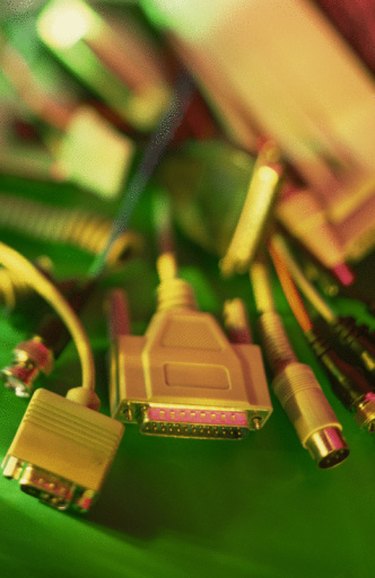
The main difference between a serial port and a parallel port is that a serial port transmits data one bit after another, while a parallel port transmits all 8 bits of a byte in parallel. Thus a parallel port transmits data much faster than a serial port. Computers have both serial and parallel ports along with newer technology called a USB (Universal Serial Bus) port.
Pin Configuration of Ports
Video of the Day
Serial ports typically are 9 pin or 25 pin male connectors. The parallel port is a 25 pin female connector where the printer cable connects. The ports COM1 and COM2 on your computer are serial ports and the LPT1 port is a parallel port. Each pin has a specific function such as transmit data, receive data, data terminal ready or autofeed. Serial ports also refer to any port that is RS232 (Recommended Standard 232) compliant in the telecommunications world.
Video of the Day
Devices That Use Serial Ports
The RS232 standard is used by many different manufacturers of devices. Some common devices that use the serial port connection are flat screen monitors, GPS receivers, bar code scanners and satellite phones or modems.
Devices That Use Parallel Ports
The parallel port is virtually synonymous with being a printer port. Other devices that communicate with a parallel port are zip drives, scanners, joysticks, external hard drives and webcams. Today, the parallel port has been replaced by the new USB port for connecting these same devices to the computer.
UART
A UART (Universal Asynchronous Receiver/Transmitter) is a piece of hardware found inside the computer that translates data between parallel and serial ports. The UART takes the whole byte of data from the parallel port and transmits it serially, one bit after another. A device on the receiving end takes each bit and reassembles it back into a whole byte of parallel data. This technology makes the use of a serial or parallel port a mute point.